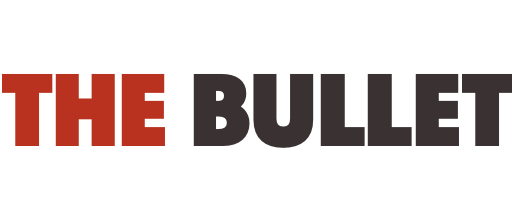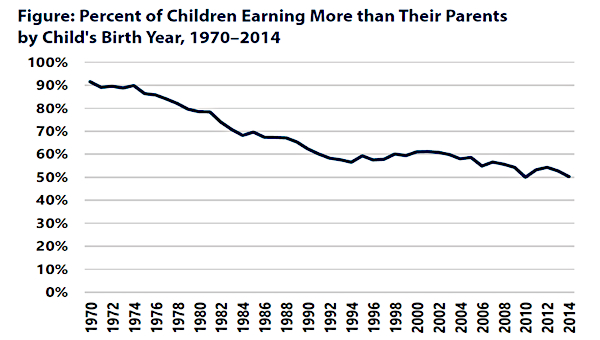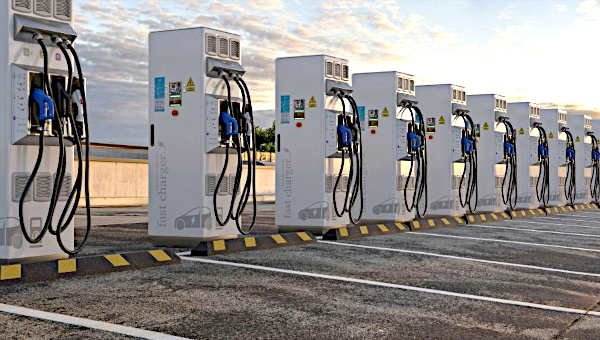Real and Fake Antidotes to Trump’s Latest Tariffs, Seen from South Africa
US President Donald Trump apparently aims to reassert his power to cause a full-blown economic catastrophe, perhaps reminiscent of 1930s-scale Make America Great Depression Again. The self-harm to his own MAGA lower-middle-class social base – especially consumers of cheap imports – will soon become evident when price inflation rises.
But since Trump hit South Africa hard on July 8 with a 30% general tariff (though there are exceptions such as platinum, gold and other minerals which are zero-rated), will we find any creative economic planners in Pretoria, and in the big Johannesburg corporates, now preparing for potentially fast-falling export markets? Not only do they face the rise from the current 10% global tariff to 30% (and an extra 20% for steel and aluminium), but there is also likely to be a 10% BRICS-penalty addition.
What about all the white farmers – allegedly victimised by South Africa’s genocidal state, in the fevered imagination of Trump and Elon Musk – who from August 1, will be the main losers from a rapid rise in the US-import price of their citrus, macadamia nuts, grapes and wine, e.g. in the town of Citrusdal?
Beyond these, two other threats loom: first, a flood of too-cheap goods that are already appearing now in containers being sent to South Africa from other Trump trade victims, especially China; and second, the European Union’s ‘Carbon Border Adjustment Mechanism’ climate sanctions on CO2-embedded exports that take effect on January 1, due to state power company Eskom’s failure to kick the coal habit.
There are four strategic options. First, meekly succumb and second, seek out new markets (especially in Africa and China) – which are ultimately fake antidotes, compared to two real ones: fight back collectively (e.g. in the G20 process), and stimulate the local economy. Consider each in turn.
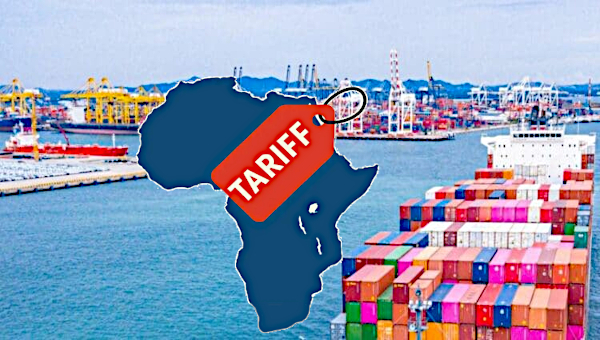
Obsequious South Africa
The first, a ‘Plan A,’ was on display on May 21 in the White House Oval Office, and over lunch afterwards, in a disturbingly servile manner, e.g. golfer Ernie Els thanking Trump that the US supported the apartheid-era army (in which he served in 1988-89), during a war against Angola that began in the mid-1970s.
For context, recall that, as Trump put it on April 8, “these countries are calling us up, kissing my ass, they are. They are dying to make a deal: ‘please please sir.’”
South Africa was one such caller, and aside from Ramaphosa’s plaintive appeal (‘please please, sir,’ won’t you play golf with me?), Trade Minister Parks Tau’s bend-the-knee offer to Trump – never made public but leaked to some extent – is that South African consumers will buy much more US-sourced methane gas and oil.
At the same time, the New York Times reported, Minerals and Petroleum Minister Gwede Mantashe would be asked to hand over South Africa’s own undeveloped offshore oil and gas leases to US Big Oil (probably replacing the likes of TotalEnergies, Shell and local firm Impact Africa). Successful environmental and community litigation plus more than a hundred shoreline protests against such drilling, starting in late 2021, went unmentioned.
A coming methane gas addiction may be a juggernaut difficult to reverse unless those protests and lawsuits intensify. Indeed, massive new US oil buying was already being unilaterally implemented in April, as South Africa purchased crude petroleum worth $80-million that month, double the level from the US in April 2024.
Yet Trump’s temporary 10% tariffs were already kicking in by the end of April 2025 (the last data available), leading to monthly crashes of major South African exports to the US, compared to the same month in 2024: automobile sales down by $79-million (-52%), platinum by $56-million (-17.1%) and diamonds by $34-million (-63.9%).
It’s now clear from the new 30% general tariff on South Africa to take effect August 1, plus the 50% special world-wide sector tariff on steel and aluminium (and 25% on autos), plus the BRICS penalty of 10%, that Plan A has unequivocally failed.
Chinese and African Trade Roadblocks
So on July 8, even the ordinarily-optimistic, always-soothing Cyril Ramaphosa had to cut his losses and finally order “government trade negotiations teams and South African companies to accelerate their diversification efforts in order to promote better resilience in both global supply chains and the South African economy.”
If Plan B is to diversify exports, then what about major problems in both continental and Chinese markets, the two most hyped growth prospects. First, the South African clothing, textiles, footwear, appliances and electronics sectors were wrecked by Asian competition during the 1990s, crashing manufacturing value added as a share of GDP from its 1990 peak of 24% GDP to 12% today, a deeper dive than even Sub-Saharan Africa as a whole.
Second, what residual industry survived is under even more extreme threat, because Chinese exporters to the US now face a 51% average tariff, up from 21% in January. Therefore, managers of ultra-productive Chinese economic sectors must address their own vast industrial overcapacity by ‘going out’ (finding new markets), in view of declining US imports of Chinese goods, 35% lower in value in April this year than last.
“South Africa remains particularly vulnerable to the potential spillover effects of such conflicts” with the US, due to displacement of Chinese production, according to anti-dumping regulator Zuko Ntsangani of Pretoria’s International Trade Administration Commission. In the last few years, Nstangani’s team raised anti-dumping tariffs against Chinese pneumatic tyres (15%), structural steel products (53%), and bolts and screws (166%). In February, the Commission also found that flat-rolled steel “imported from the People’s Republic of China, Japan and Taiwan were being dumped in the Southern African Customs Union market, causing material injury to the SACU industry.”
Third, the African Continental Free Trade Agreement (AfCFTA) is encouraging in theory but has not yet delivered mutually-advantageous market opportunities. The most rigorous study of reasons why, by the Geneva-based South Centre, highlights Africa’s “poor transport and logistics network; the prevalence of non-tariff barriers and disputes; limitations to movement of persons; multiple Rules of Origin regimes; multiplicity and overlapping memberships; similarity in trade basket of goods; gaps in labour provisions; free trade agreements with third parties; rushed negotiations and hollow protocols; and high donor dependence.”
We might add the endless cases of political instability that lead African autocrats to shut down their internet (in 15 countries since 2020) and close their borders to trade and migration, such as occurred since the AfCFTA came into effect (unrelated to Covid-19) in Benin from 2023-today, Burkina Faso in 2022, Burundi-Rwanda in 2024, Ethiopia-Sudan in 2021-22, Mali in 2020-21, Mozambique-South Africa in 2024-25 and Niger in 2023.
Then we must add another worry to what the South Centre calls the “weak productive bases of most African economies with few sectoral linkages between countries,” namely additional financing problems. These include the lack of a common continental currency (like the Euro); worsening African sovereign debt crises (with bankruptcies on international repayments by Ghana, Zambia and Ethiopia since 2022 and nearly two dozen other low-income African countries in debt distress); extreme exchange-rate, interest-rate and economic volatility on the continent; and lack of access to consistent, affordable trade financing.
On the latter point, there are only 17 member central banks in the Pan-African Payment and Settlement System. One absence is the apparently frightened South African Reserve Bank, according to AfCFTA secretary-general Wamkele Mene: “I regret that South Africa has not yet adopted the Pan-African Payment and Settlement System because I think it is a political economy question… If today you upset somebody in Washington, in London, you will be kicked out of SWIFT and you will not be able to transact with the rest of the world.”
Moreover, the South Centre confirms, African trade unions are rightly nervous of continental free trade because “the imminent dangers of AfCFTA on labour rights are profound,” since the agreement fails to “include any labour provisions nor make any reference to the globally recognised International Labour Organisation decent work agenda…; including a lack of a labour rights enforcement mechanism, and weak language on labour rights.”
Counter-Attack
Plan C would be to fight back against Trump, ideally collectively. Recall the precedent of Beijing’s own ban on exporting rare earth elements to US corporations, which in turn caused a so-called ‘Trump Always Chickens Out’ (Taco) reversal by the White House in May. Such an approach was posed first by Mantashe at a mining conference in February: “Let’s withhold minerals from the US. That is it. If they don’t give us money, let us not give them minerals.”
In the wake of the new tariffs, Mantashe’s idea was resurrected by Daily Maverick’s Steven Grootes: “I thought people were wrong to laugh at him so quickly when he first said Africa should consider refusing to export its minerals to the US. Probably our biggest lever of the moment is platinum: prices have jumped dramatically in the past two months, mainly because of a scarcity of supply.”
Grootes continued, “If Trump doesn’t get his platinum from us, he can go either to Russia (while sending more arms to Ukraine…; good luck with that) or Canada (which is pretty keen on some levers of its own at the moment) or Zimbabwe. In other words, US companies might suddenly find that they have very few places to get their supplies if we refuse to sell the stuff to the US. Now, it might seem impossible to ban the export of platinum, and probably is. But it would be pretty easy to put a nice big export tax on it.”
Were there political will, it would be easy to start an OPEC-like supplier’s cartel for platinum, in view South Africa holding 80+% of world reserves, and also having concentrations of chromite and manganese close to 40% of world reserves.
The main leverage against Trump, however, could be Ramaphosa’s hosting of the G20. In March 2014, the Western powers in the G8 decided by consensus to temporarily expel Russia due to its invasion of Crimea. To be sure, G20 members include three likely Trump allies – Argentina’s Javier Milei, Italy’s Giorgia Meloni and Saudi Arabia’s Mohammed bin Salman – but they are far outnumbered by Trump critics.
The US state and business (‘B20’) delegation should be temporarily expelled – voted off the G20 island – if Ramaphosa is serious about those “diversification efforts in order to promote better resilience,” not only in local economic terms, but also in areas of global crisis. Trump has pulled out of UN climate negotiations and the World Health Organisation (and other UN agencies), even though extreme weather and new pandemic potentials are devastating.
Trump not only chopped international climate financing and AIDS medicines support in February, but also emergency food aid. A British Lancet academic study has just reported rigorous predictions of 2.4 million premature deaths annually through at least 2030 due solely to the closure of USAID, not to mention the damage Trump is doing to nearly 12 million low-income US citizens by ending their Medicaid health insurance via his new corporate tax-cut legislation.
That law further destabilises world finance by adding $3.4-trillion to the US public debt. Trump’s imperialist bullying has caused trade and financial chaos across the world, tearing asunder global value chains and creating major new inefficiencies in capitalist production and commerce.
And in West Asia, his geopolitical agenda, arms supplies to Israel, and Pentagon adventurism are contributing to genocide and new wars, as could his notorious Sinophobia. Trump’s hostility to immigrants, his neo-fascistic deportation methods and his cancelation of progressives’ free speech have left vacant the very idea of human rights in the US.
Trump’s reactionary social agenda, including open racism, will always prevent him and his foreign minister Marco Rubio from endorsing G20 themes of solidarity, equality and sustainability. For Trump to host the G20 next year would make all the work now underway in Pretoria an utter waste of time; far better to ask Mexican President Claudio Sheinbaum to prepare 2026 hosting of the G19.
Local, Efficient Use of Resources
Adopting Plan C would put South Africa onto the global economic-justice map – in the way its defense of Palestinian survival and the integrity of the international courts via genocide charges against Israel and ‘Hague Group’ co-leadership have made Pretoria the world’s leading moral force. But in addition to fighting back for global justice, there is unfinished business within South Africa, so Plan D is needed: redirecting resources to local markets.
The decline of steel is an example: from 6.4 million tonnes produced in 2014 to 4.7 million a decade later. Local consumption in 2024 was only 4.1 million tonnes, of which a third was imported from China, in turn putting pressure on ArcelorMittal to accelerate foundry closures because its price structure is too high (and China also dumps steel products below cost).
Genuine redindustrialisation would require taking seriously former Trade and Industry Rob Davies’ tough decade-old criticisms of the main steel firm, (Luxembourg-headquartered) ArcelorMittal, which was formerly state-owned Iscor.
Then, as the SA Federation of Trade Unions demands, it should be returned to public ownership: “It is clear that privatisation has failed. The steel industry must be reclaimed as a public asset to safeguard jobs, rebuild local production capacity, and restore South Africa’s industrial sovereignty.”
The same for the main aluminium plant, which is BHP Billiton’s South32 smelter in Richards Bay, guzzling 5% of the country’s electricity mainly for foreign buyers to the detriment of over-charged South African industry, resulting in few economic linkages to benefit locals. Worse, before what was a secretive price increase in 2021, South32 paid only R0.22/kWh ($0.015), about 15% (1/7th) of the price ordinary people paid then for even at the lowest consumption level.
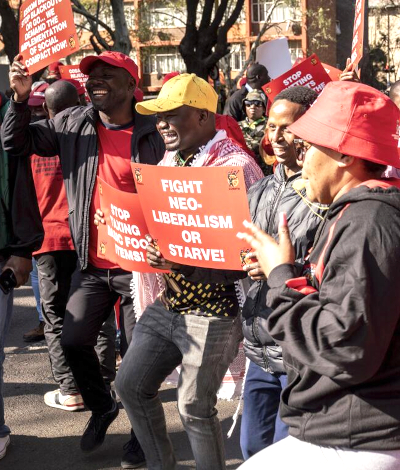
Indeed in the year of peak abuse in 2015, the 31-corporate-member Energy Intensive Users Group lobby – featuring smelting and mining firms – paid very low prices for the 44% of the country’s electricity consumed, while at the time, the firms hired fewer than 600,000 of the country’s 15.7 million employed workers (3.8%).
So in the event of a likely sharp decline in US buyers’ demand for South Africa’s (now highly-tariffed) smelted metals and other energy-intensive (and thus high-CO2-emitting) production, it would be sensible to reallocate electricity. Eskom’s scarce, expensive power can be used much more sensibly by locally-owned labour-intensive industry and small businesses, as well as township and rural households in which Black women are bearing the burden of the racist so-called ‘load reduction’ disconnections.
For boosting local demand for the industries hardest hit by Trump’s tariffs, including steel, then much greater public infrastructure spending and higher housing subsidisation are required. The latter, state housing expenditure, declined 30.1% in inflation-adjusted Rand value from 2019-24.
And by 2023, the state had cut its real public-sector capital expenditure (machinery, construction, equipment, buildings, land and other fixed assets) by 41% from the 2016 peak, notwithstanding a post-Covid upward spike. The climate catastrophes that periodically wreck South Africa’s un-resilient cities are the most obvious place to hire local workers for climate-proofing municipal infrastructure. Their job: prevent the collapse of stormwater drainage, roads and bridges and save hundreds of victims of collapsed houses, as happened in the April 2022 ‘Rain Bomb’ that hit Durban.
Financing a demand-led recovery requires new policies:
- much tighter exchange controls (given the excessive loosening since 1995 compared to the period from 1939), and thus more scope to lower interest rates (and in turn, cut public debt repayments) without risk of capital flight;
- reimposition of ‘prescribed assets’ to divert useless paper-chasing-paper gambling in the way-over-valued Johannesburg Stock Exchange (measured by the Buffett Indicator), to productive and infrastructural investments;
- a proper Treasury audit to weed out (and reject repayment of) the massive ‘Odious Debt caused by lenders like the World Bank on SA’s biggest-ever loan, for Eskom’s corrupt Medupi power plant;
- creative use of the SA Reserve Bank’s (now highly-over-valued) gold and forex reserves; and
- a wealth tax on the richest households (here in the world’s most income – and wealth – unequal country), much higher taxes on corporates (the rate was dropped from 50% just before apartheid ended, to 27% today, in the vain hope of new investment and less capital flight), as well as a serious carbon tax – many multiples more than the current tokenistic R7.8/tonne – imposed on the main sources of extremely damaging CO2 emissions (while protecting basic-needs energy and transport).
Such spending and revenue raising is a coherent ‘Keynesian’ strategy for economic recovery – i.e., through locally-oriented, needs-based growth instead of export-oriented decline, and also with more of the protectionism that’s now probably going to be urgent, given the surge of import pressures in the wake of Trump’s tariffs.
What degree of political will is necessary to stand up, against both the US government and local elites, and can South Africans who care about the public interest rise to the occasion? One good precedent was when the Treatment Action Campaign and Congress of SA Trade Unions protested 25 years ago, and by 2004 won patent-free AIDS medicines delivered through the public sector – which was responsible for raising average South African life expectancy from 54 to 66 over the last twenty years – in spite of Thabo Mbeki’s opposition and the World Trade Organisation’s Trade-Related Intellectual Property Rights.
A bad example of heightened political will to redistribute income came in July 2021, when Ramaphosa was compelled to restore the R350 Social Relief of Distress Grant two weeks after the populist, opportunistic uprisings in KwaZulu-Natal and Gauteng that left 354 people dead. With at least R50-billion ($3.4-billion) of damage from arson and looting, the state political-risk insurer called mid-2021 “the most expensive riots in the world, bigger than the riots claims in Chile and those in the US” over the prior decade.
The 1955 Freedom Charter and 1994 Reconstruction and Development Programme are the kinds of visionary statements aimed at restructuring an unfair economy, one self-destructively addicted to export of barely-processed raw materials to the neo-colonial West. Will the National Dialogue process and August 15 Convention move South African society toward Plan D, or will we once again be exposed to the typical commitment of elites, to mere tinkering with the economic status quo, as Trump kicks exporting corporations in the teeth? •
This article first published on the CADTM website.

